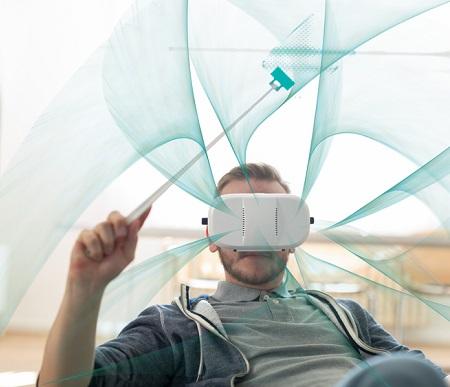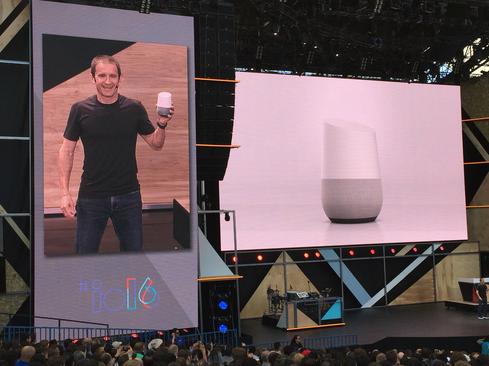An IDC report finds augmented reality and virtual reality technologies have a bright future, with revenues growing to $162 billion by 2020. The study finds AR and VR will offer major applications for healthcare and product design.

Google I/O 2016: AI, VR Get Day In The Sun
Google I/O 2016: AI, VR Get Day In The Sun (Click image for larger view and slideshow.)
Worldwide revenues for the augmented reality (AR) and virtual reality (VR) market are projected to grow from $5.2 billion in 2016 to more than $162 billion in 2020, according to a report from IT research firm IDC.
That represents a compound annual growth rate (CAGR) of 181.3% over the next four-year period, with sales of AR and VR hardware generating more than half of worldwide revenues throughout the forecast period.
While revenues for VR systems, including viewers, software, consulting services, and systems integration services, are forecast to be greater than AR-related revenues in 2016 and 2017, IDC forecasts that augmented reality revenues will surge forward after 2017, hitting critical mass in health care delivery, product design, and management-related use-cases.
In the Aug. 15 report, Tom Mainelli, vice president for devices and AR/VR for IDC, noted:
The rise of new, less expensive hardware will put virtual and augmented reality technology within the grasp of a growing numbers of companies and individuals. But as always, what people can do with that hardware will depend upon the applications and services that power it. In the coming years, we expect developers to create a wide range of new experiences for these devices that will fundamentally change the way many of us do work.
Interest among major tech companies in AR has been growing in recent years, as Microsoft -- with HoloLens -- Google, and Apple have invested in the sector with new hires and startup acquisitions.
An unnamed Google spokesman recently told technology blog Engadget that the company is still working on a secretive device that would blur the boundaries between VR and AR.
The report surfaced following a different article in Recode that maintained Google had scrapped its high-end VR project, which would have competed with the likes of Oculus Rift and other sophisticated headsets.
[Read more about Microsoft's HoloLens.]
Meanwhile, Microsoft's Windows Holographic, a version of Windows 10, is designed to power mixed-reality experiences. It contains a holographic shell and interaction model, perception APIs, and compatibility with Xbox Live.
Redmond plans to extend this platform to OEM, ODM, and hardware partners so they can create mixed-reality devices, PCs, displays, and accessories with the platform.
Windows Holographic will be compatible with devices that include technologies ranging from immersive VR to untethered holographic computing.
In a recent interview with The Washington Post Apple CEO Tim Cook briefly acknowledged the company's interest in the technology, but left much to the imagination.
When asked about AR or VR, Cook made a coy reference, referring to them as a "core technology" but saying little else about his thinking or the company's overall plans.
"I think AR is extremely interesting," said Cook. "So, yes, it's something we're doing a lot of things on behind that curtain that we talked about."
Meanwhile, Apple continues to bolster its roster of virtual reality and augmented reality specialists with the hiring of Doug Bowman, a former interactive computing researcher at the Center for Human-Computer Interaction at Virginia Tech, according to a Financial Times report.
About the Author(s)
You May Also Like








